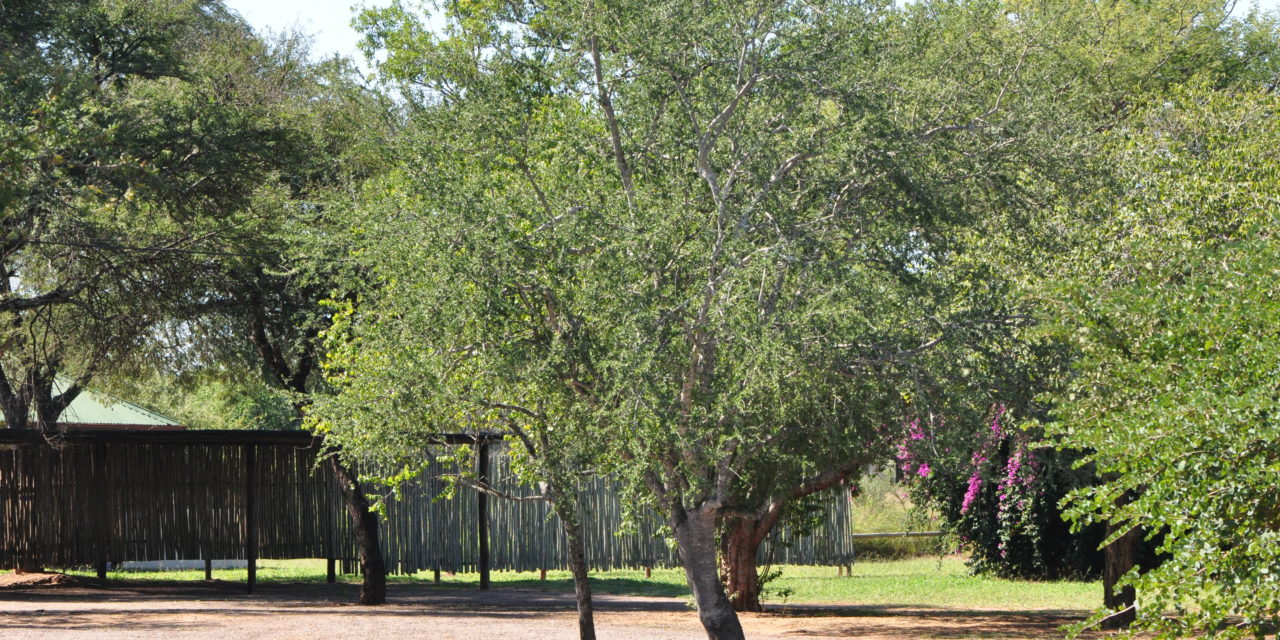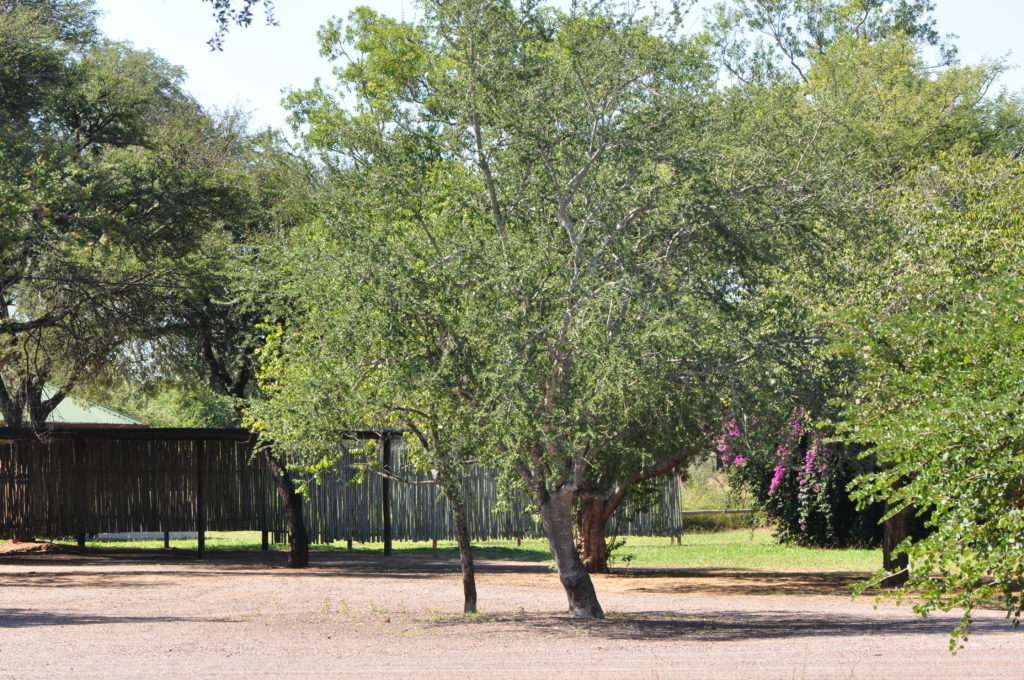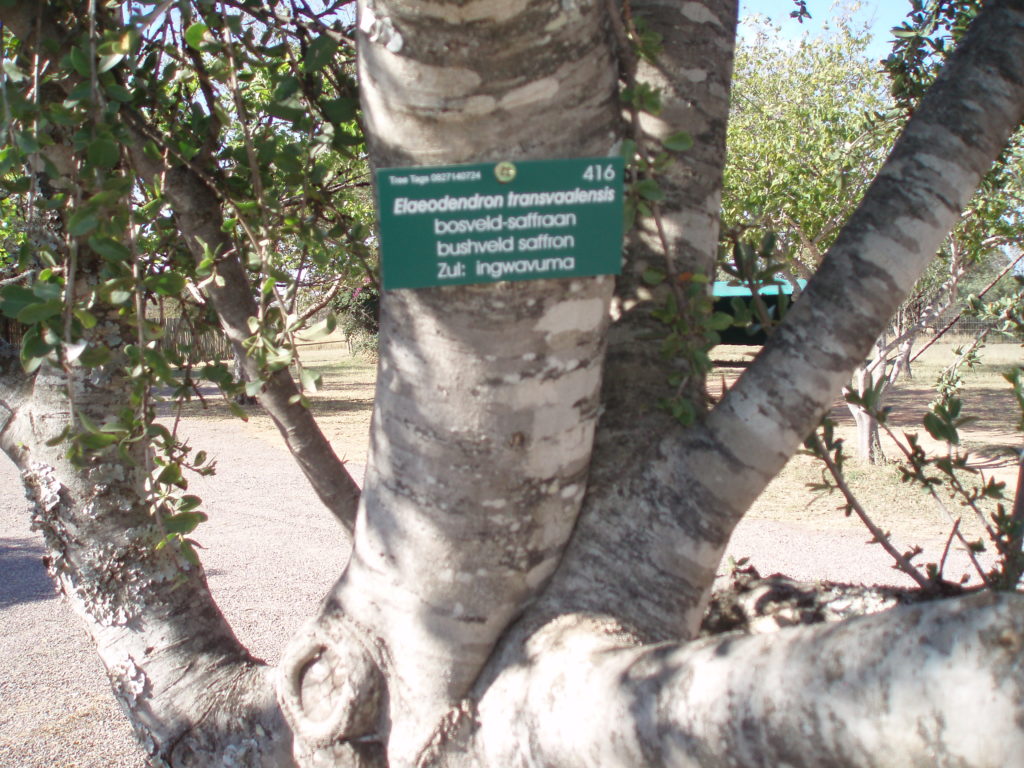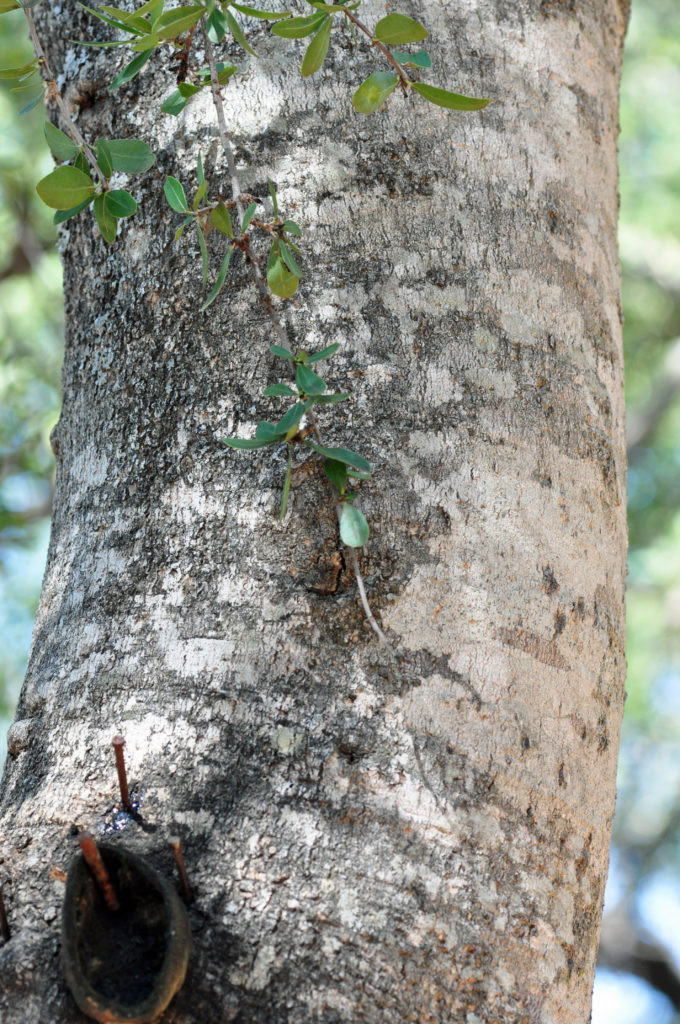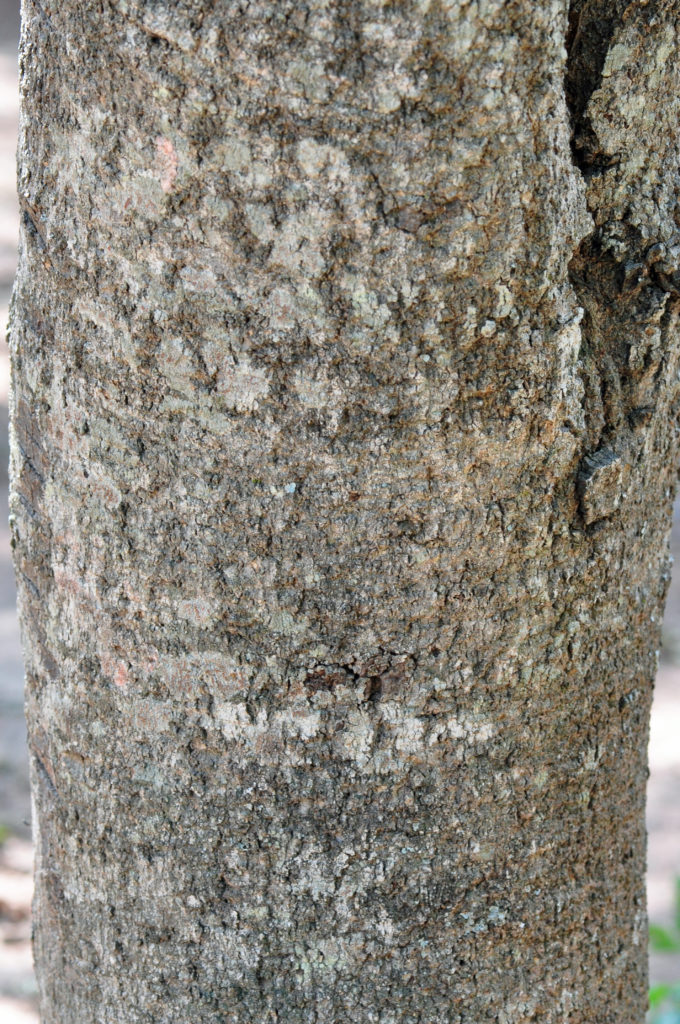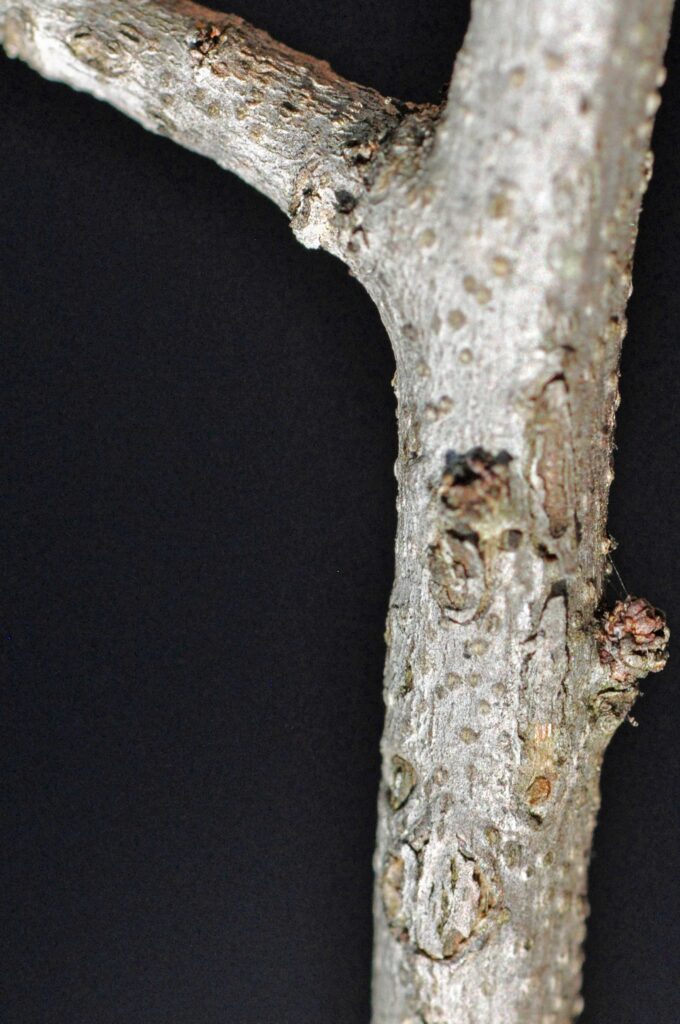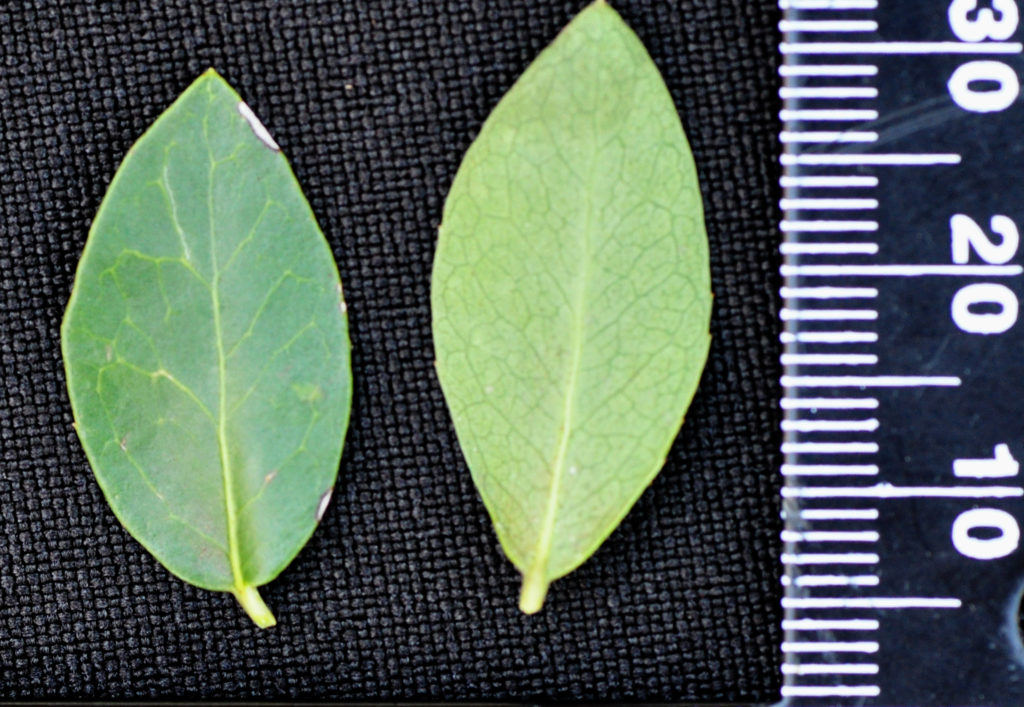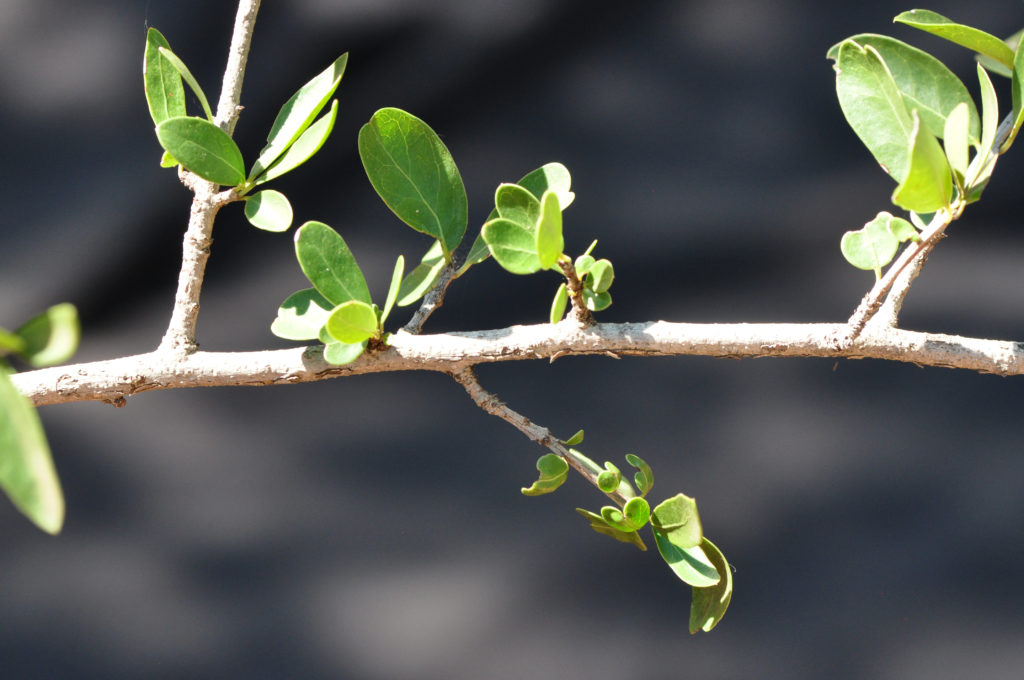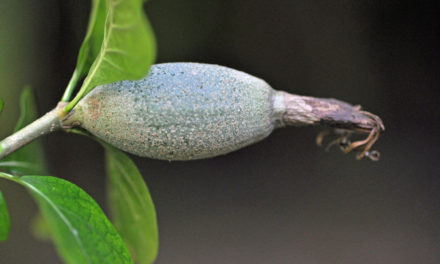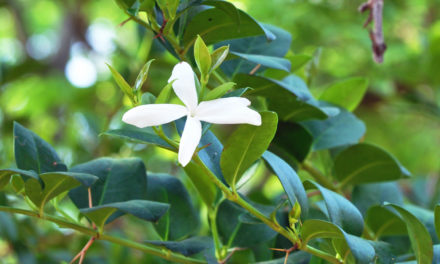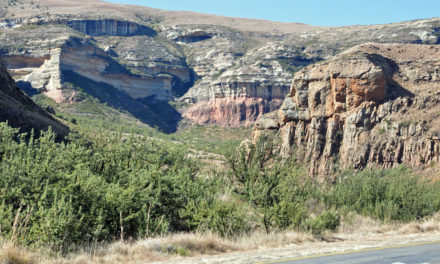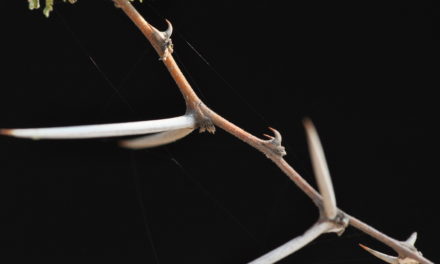General Info – summary
This near threatened Tree is up to 9m high and has pale-grey and often smooth bark. It may also be a shrub. Simple, translucent Leaves are entire but may be toothed and have a short petiole. Regular, bisexual Flowers are tiny with 3 petals, 3 stamens and has 2 ovules in each locule. Fruit is a hard-shelled drupe that matures to a red colour and is up to 2cm long. The hard brownish seeds are ellipsoidal.
Description
Elaeodendron transvaalense
Previous Names: Elaeodendron croceum, Cassine transvaalensis, Crocoxylon transvaalense, Hippocratea seineri, Pseudocassine transvaalensis, Salacia transvaalensis.
SA Tree No. 416.
Common names: (Afr) Bosveldsaffraan, Bosveld-saffraan, Lepelhout, Lepelhoutboom, Oupitjie, Transvaalsaffraan. (Eng) Bushveld Saffron, Transvaal Saffronwood, Savanna Saffronwood, Ingwavuma. (isiZulu) Ingwavuma, Inqotha, Umgugudo. (Northern Sotho) Monomane. (Setswana) Monomane. (siSwati) Ingwavuma, nGcotfo, Umcabango. (Tshivenda) Mulumanamana. (Xitsonga) Ximapana.
Family: Celastraceae. (Spike-thorn, Staff-tree and Bitter-sweet family). There are currently close to 100 genera and in excess of 1 300 species. About 8 of these are in South Arica. Four are included on this website: Catha, Elaeodendron, Gymnosporia and Maytenus. This family has simple Leaves. Flowers are usually small, actinomorphic (regular), bisexual or unisexual and sepals and petals are usually persistent. One or 2 Pollen sacs are present on each Anther which opens by a longitudinal slit. The Ovary is usually superior and usually has 2-5 locules. The Style is usually thick, and the Stigma has 2-5 lobes. Fruit varies.
Name derivation: Elaeodendron – Greek: similar to Cassine orientalis whose fruits resemble small olives. This is a local tree in Mauritius, Reunion and Rodrigues – known as Bois d’Olive. transvaalense – occurring in the former Transvaal province. The northern Kwazulu Natal town: Ingwavuma (isiZulu common name), close to Swaziland boarder, was named after this tree. 4 species of Elaeodendron occur in Southern Africa.
Conservation: National Status: NT Near Threatened. 2008 (V.L. Williams, D. Raimondo, N.R. Crouch, A.B. Cunningham, C.R. Scott-Shaw, M. Lötter and A.M. Ngwenya). This plant is slow growing and is heavily harvested for local medicine. This plant cannot survive repeated bark removal.
Tree
This spineless, much branched, straight and unarmed Tree may reach 18m high further north but is often a bushy shrub and usually about half this height in the South Africa. The slightly aromatic Bark is often smooth, cracked, a clear pale grey colour (photos 64, 460 & 459), and may become finely longitudinally fissured. Underbark is slightly orange. The rounded Crown is wide and spreading (photo 472). The many Branches tend to be rigid and may droop. Twigs (1-year-old current branch segments) are stiff and light coloured. They grow at almost 90 degrees to the branches and may resemble blunt spines (photo 457 – under Leaves). Lenticels (usually raised corky oval or elongated area on the plant that allows the uncontrolled interchange of gases with the environment) are clearly visible on young stems (photo 458).
- 472. 2018/04/25 Nylsvley NR. Photo: David Becking.
- 64. 2009/05/30 Nylsvley NR. Photo: David Becking.
- 460. 2018/04/25 Nylsvley NR. Photo: David Becking.
- 459. 2018/04/25 Nylsvley NR. Photo: David Becking.
- 458. 2018/04/25 Nylsvley NR. Photo: David Becking.
Leaves
The tree may be deciduous or evergreen. The hairless, hard, leathery and smooth Leaves (photo 454) are simple (have a single blade which may have incisions that are not deep enough to divide the blade into leaflets). They are usually up to 4 x 1,5cm (photo 454). Bigger leaves may be found on younger stems. The leaves are opposite, alternate or spirally arranged on longer stems, or appear clustered on dwarf spur-branchlets (photo 457). They may appear in threes on short side twigs. In mature leaves, both sides are a clear green to grey-green and slightly lighter below (photo 454). Leaves are oval, ovate, elliptic or widely lance-shaped. The Apex is rounded to broadly tapering and may have a small gland and a hair-line tip. The Base tapers narrowly or broadly and the veins are prominent on both sides but more so the lower side (photo 454). The Blade becomes translucent when viewed against a strong light. This helps distinguish it from the African olive (Olea europaea subsp. africana) which has opaque leaves. The Margins are usually entire (with a continuous margin, not in any way indented but may but may be finely or strongly serrated and glandular (photo 454), especially on young and coppice growth (in this case when stems are cut or burned it causes regrowth from the stump or roots). The margins are not rolled under, and each slender Petiole (leaf stalk) is short: 2-5mm long.
- 454. 2018/04/25 Nylsvley NR. Photo: David Becking.
- 457. 2018/04/25 Nylsvley NR. Photo: David Becking.
Flowers
The bisexual Flowers are actinomorphic (Regular, symmetrical. Flowers are vertically divisible into similar halves by more than 1 plane passing through the axis). They develop in leaf axils and are greenish-white. Flowers are very small: about 5mm in diameter and are borne in clusters of 20-30 heads that are collectively about 2cm long. Individual flowers are on long slender Pedicels (stalks of a single flower). There are 3-4 sub-circular Sepals that are joined at the base. The 3-4 cream to green Petals are spreading. The flowers have 3-4 Stamens. The 2-4 locular Ovary is half immersed and adnate (fusion of unlike parts) in the Disc (a more or less fleshy or elevated development of the receptacle). There are 2 Ovules in each locule. The Stigma is inconspicuous. (Nov-Apr).
Fruit
The hard-shelled, edible Fruit is a smooth Drupe (a fleshy, 1-seeded indehiscent fruit with the seed enclosed in a stony endocarp; stone fruit e.g., peach) which may be roundish, oval or ovate and up to 2cm long. It is initially white to yellow, and is up to 2 x 1,5cm. The hard brownish, elliptic Seeds possess endosperm (the starch and oil-containing tissue of many seeds; often referred to as the albumen) and the 2 Cotyledons (primary seed leaves in the embryo) are fleshy. (Feb-Oct).
Distribution & Ecology
This plant cannot survive repeated bark removal and this may become a major problem for conservation in the future. These widespread but not common Trees can be found in KwaZulu-Natal e.g., Mkuze and Hluhluwe reserves – where they are conspicuous, Mpumalanga, Limpopo as well as in Swaziland, Southern Mozambique, Zimbabwe, Botswana, Zambia, Namibia, Angola, Zambia, Angola and northwards. The plant is widespread but nowhere common. It is found in different soils, but the tree seems to favour soils containing lime. Trees are often associated with termite mounds and may occur from low to medium altitudes in open woodland, savanna, bushveld and wooded hillsides. Giraffe, elephant, impala and kudu browse the Leaves and Branches. The Fruit is consumed by monkeys and birds – including loeries (turaco) and hornbills.
Ethnobotany
The Wood is a whitish-pink, cross-grained, hard, and of medium density and hardness. It is fine textured and insect resistant. It is used to make cattle troughs and kitchen utensils – like spoons, sticks and tobacco pipes. The village of Ingwavuma in KwaZulu-Natal, near the southeast boarder of Swaziland, was named after this tree. The Bark contains at least 13% tannin and is used for tanning. Bark is sold by a great number of herbalists who call it umGugudo or inGwavuma. In Venda, traditional healers know it as mukuvhazwivhi which literally translated means sin-washer. The Fruit is edible. The slow growing plant is best grown from cuttings (viable seeds are difficult to find). Before planting, Seeds should be scarified (soaked in warm water for 24 hours and then the seed coat chipped to allow water in). This plant is widely used in local medicine.
References
Boon, R. 2010. Pooley’s Trees of eastern South Africa. Flora and Fauna Publications Trust, Durban.
Burrows, J.E., Burrows, S.M., Lotter, M.C. & Schmidt. E. 2018. Trees and Shrubs Mozambique. Publishing Print Matters (Pty) Ltd. Noordhoek, Cape Town.
Coates Palgrave, M. 2002. Keith Coates Palgrave Trees of Southern Africa. edn 3. Struik, Cape Town.
Palmer, E. & Pitman, N. 1972. Trees of southern Africa. Balkema, Amsterdam, Cape Town.
Schmidt, S. Lotter, M. & McCleland, W. 2002. Trees and Shrubs of Mpumalanga and the Kruger National Park.
Williams, V.L., Raimondo, D., Crouch, N.R., Cunningham, A.B., Scott-Shaw, C.R., Lötter, M. & Ngwenya, A.M. 2008. Elaeodendron transvaalense (Burtt Davy) R.H.Archer. National Assessment: Red List of South African Plants version 2020.1. Accessed on 2023/03/29.
Elaeodendron Jacq. | Plants of the World Online | Kew Science
http://pza.sanbi.org/elaeodendron-transvaalense
https://www.zimbabweflora.co.zw/speciesdata/species.php?species_id=137070
https://repository.up.ac.za/bitstream/handle/2263/42430/Tshisikhawe_Population_2013.pdf?sequence=1
http://posa.sanbi.org/flora/browse.php?src=SP

